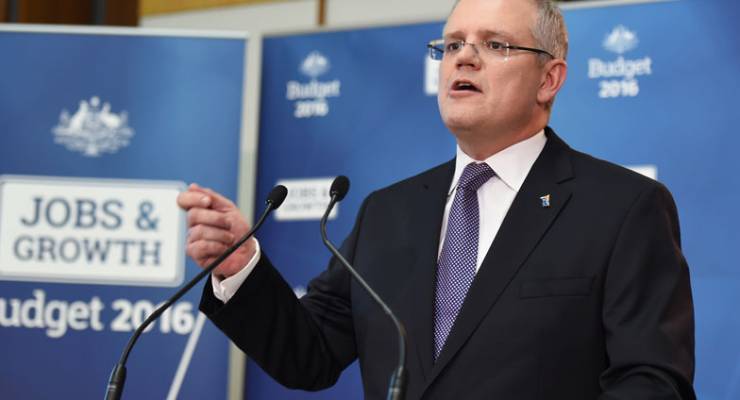
With an election just two months away, the Turnbull government has opted for a traditional big-spending pre-election budget that increases deficits every year over the budget period, pushes the return to surplus further away and making a mockery of the Coalition’s claims to fiscal rectitude.
Australia will not return to surplus until at least 2020-21, with the budget still $6 billion in deficit in 2019-20 — about the same amount last year’s budget forecast for 2018-19. This year’s budget forecasts that by 2018-19, we will be more than $15 billion in the red.
Both this current financial year’s deficit and the 2016-17 deficit have also blown out from the levels forecast only a few months ago in December’s Mid-Year Economic and Fiscal Outlook — the 2015-16 deficit will now be just under $40 billion, or $2.5 billion higher than MYEFO; the 2016-17 deficit is forecast to be $37.1 billion, up $3.4 billion. Just two years ago, the infamous 2014 budget forecast an almost negligible deficit of $10 billion for 2016-17, illustrating how far the government that once promoted itself as the fiscal fireman has allowed deficits to get out of control.
The government has also adjusted upward its spending reduction path over coming years — despite a mild reduction in spending this financial year as a proportion of GDP due to slightly higher economic growth, spending will still be above 25% of GDP in 2019-20, much higher than the level the government inherited from Labor in 2013.
This is despite higher commodity prices than forecast in MYEFO — a 41% rise in iron ore price and metallurgical coal also up substantially (to $91) — an improvement in forecast terms of trade (the budget actually forecasts a return to growth in terms of trade in 2016-17) and lower unemployment, which is now expected to peak at 5.5% in 2016-17 and remain there the following year. The budget has also revised up forecasts for household consumption, though business investment and wages forecasts have been revised down. Most significantly, GDP growth in 2016-17 has been revised down to 2.5% from 2.75%.
The big spending in the budget centres on tax cuts:
- The $80,000 tax threshold will lift to $87,000, providing middle- and high-income earners with a small tax cut that will cost the budget around $4 billion over forward estimates.
- The threshold at which the lower company tax rate applies to small business will be lifted to $10 million, costing just over $2 billion over four years.
- The company tax rate for all companies will be reduced over a decade to 25%, costing $2.65 billion in the first four years of the transition.
As expected, there will also be a replacement for the low income superannuation contribution (now a tax offset), which will cost $1.65 billion.
As flagged ahead of the budget, there’ll also be some major tax revenue items:
- An increase in tobacco excise to raise $4.7 billion over the forward estimates;
- A “Tax Avoidance Taskforce” targeting multinational tax avoidance to raise $3.7 billion, and a “Diverted Profits Tax” aimed at preventing multinationals from siphoning profits offshore, which will raise $650 million; and
- Changes to superannuation tax concessions that will curb revenue loss by around $.3 billion.
Absent, however, is a coherent economic narrative: the budget papers are full of references to “transition” and “jobs and growth”, but the measures have a piecemeal feel to them — understandably, given they have been compiled quickly and with an eye on their electoral appeal. We’re no closer to understanding where the Turnbull government wants to take us. And, as the Reserve Bank decision today reveals, that question is now important not just politically but economically.








Tobacco excise increase to raise $4.7B but the Tax Avoidance Taskforce will, maybe, kinda-sorta, rake in $3.7B!
Seriously? Smokers to the rescue. Tax lawyers to bed.
Isn’t the “tax avoidance taskforce” actually just a re-hire of a small portion of the jobs cut from the ATO in 2014? To be fair, they probably couldn’t afford to hire everyone back given the substantial amount the redundancies would have cost, combined with the higher salaries now needed to poach these ex-employees back from their private sector roles.
“Tax Avoidance Taskforce”
May well be window dressing.